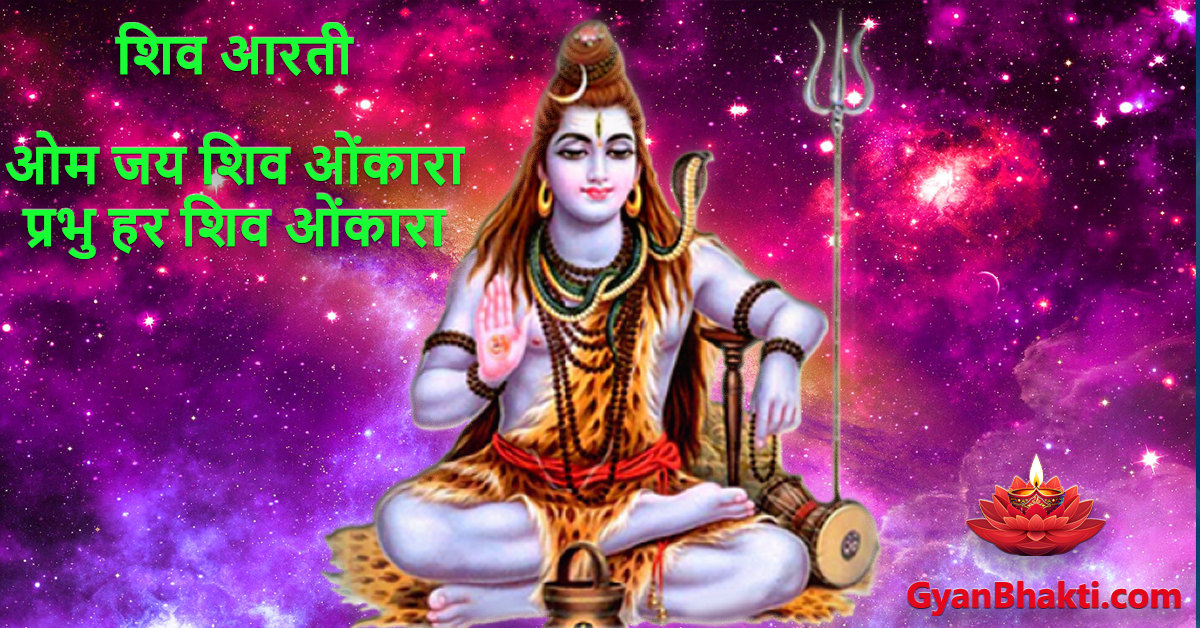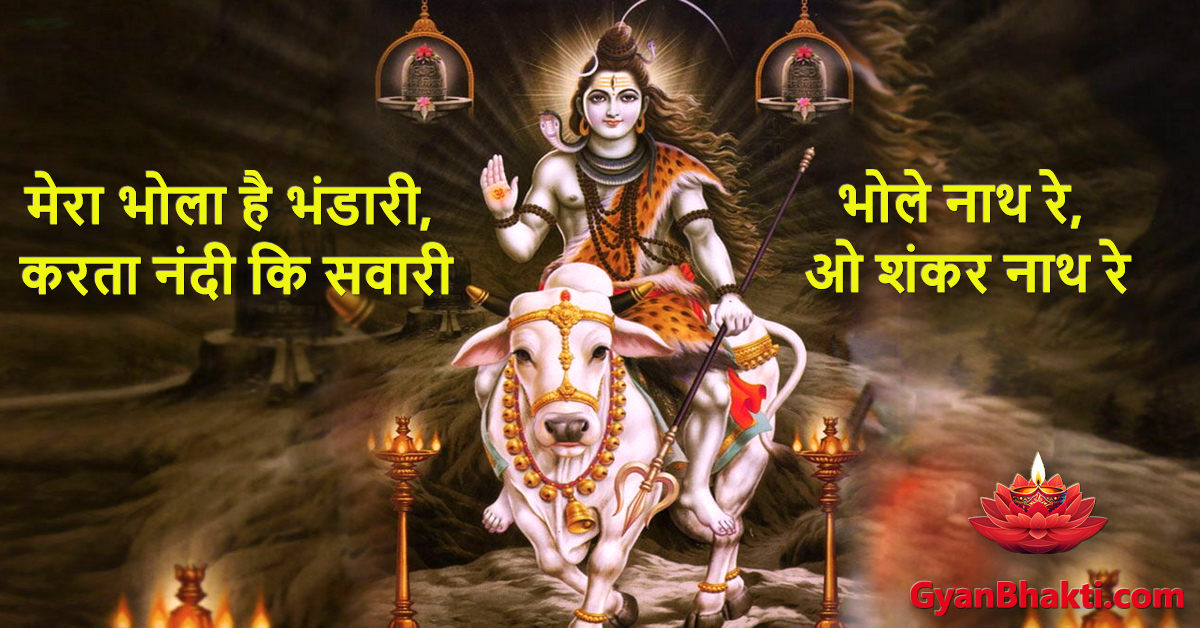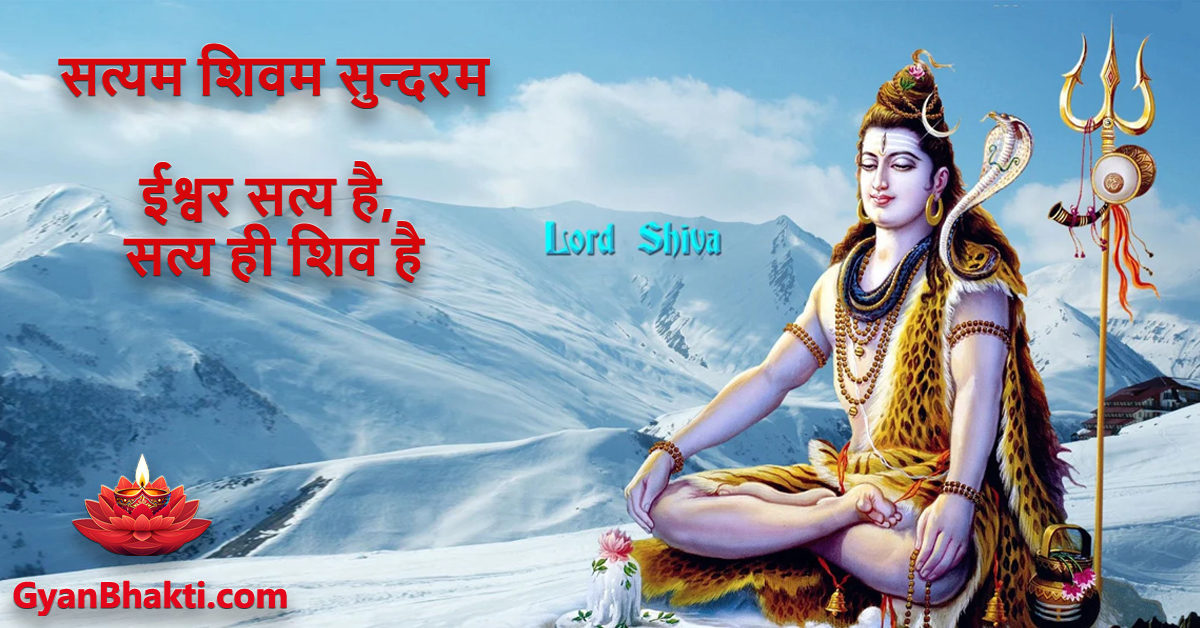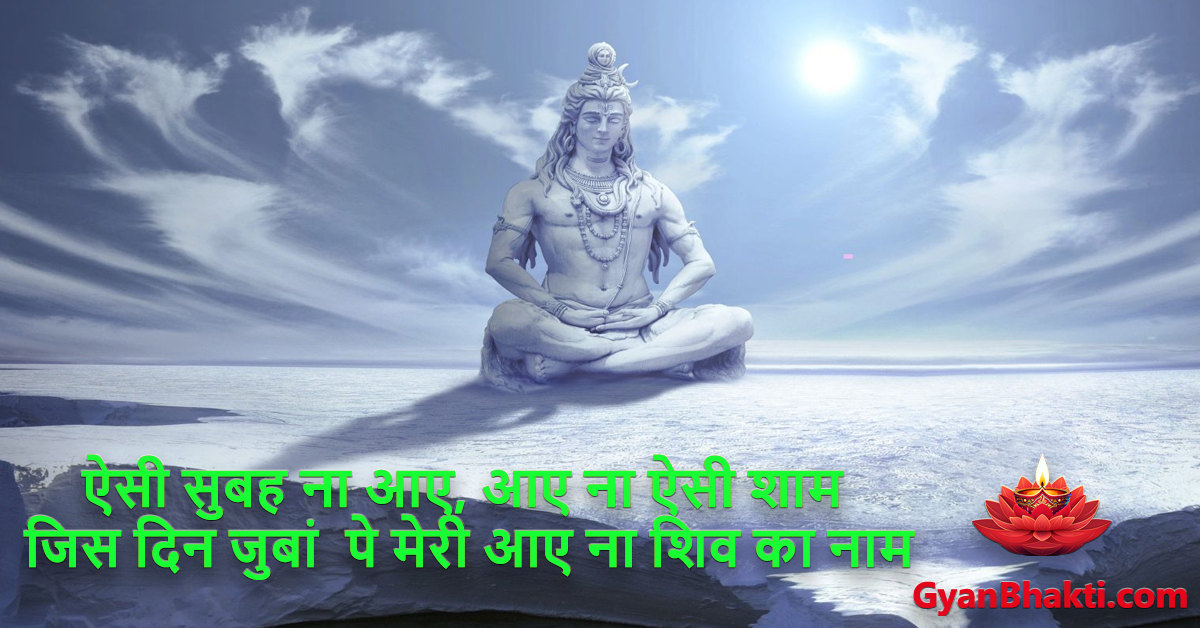Om Sundaram Omkar Sundaram
Om sundaram Omkar sundaram
Shiv sundaram Shiv naam sundaram
Shiv vandanam Shiv naam vandanam
Shiv dhaam vandanam
Chandrabhaal sheesh gang dhaar sundaram
Neelkanth sarp moond maal sundaram
Om sundaram….
Bhootpret naath bhootnath sundram
Jagatguru Shiv shankar kashinath sundram
Om sundaram….
Bhasma ang ramaye bhsmibhoot sundaram
Alakh niranjan sanyaasi avdhoot sundaram
Om sundaram….
Karpurgauram sansaar saaram sundaram
Karunavtaaram bhujgendra haram sundaram
Om sundaram….
Mandaar pushp chandan bilva patra sundaram
Shivaalay mein Shivroop Shivaling darshan sundaram
Om sundaram….
Om ke aadhar Shiv swaroop sundaram
Om Namah Shivay mantra bhoop sundram
Om sundarm….
Ardnarishwar darshan pranam sundaram
Gauri sut Ganesh ko hai dhyan sundaram
Om sundaram….
Om sundaram Omkar sundaram
Shiv sundaram Shiv naam sundaram
Om Sundaram Omkar Sundaram
Kumar Vishu
Shiv Bhajan
- Om Jai Shiv Omkara - Shiv Aarti
- Saj Rahe Bhole Baba Nirale Dulhe Mein
- Mera Bhola Hai Bhandari, Kare Nandi Ki Sawari
- Shiv Shankar Ko Jisne Puja
- Satyam Shivam Sundaram
- Aisi Subah Na Aaye, Aaye Na Aisi Shaam
- Kailash Ke Nivasi Namo Bar Bar
- Sheesh Gang Ardhang Parvati - Shiv Aarti
- Hey Shambhu Baba Mere Bhole Nath
- Shri Badrinath Stuti - Badrinath Aarti
- Bolo Bolo Sab Mil Bolo Om Namah Shivaya
- Shiv Shankar Damru Wale - Hai Dhanya Teri Maya Jag Me
- Bum Bhole - Yahi Wo Tantra Hai
- Shiv Ka Naam Lo, Har Sankat Mein Om Namo Shivaay
- Subah Subah Le Shiv Ka Naam
- Om Sundaram Omkar Sundaram
- Shankar Mera Pyara, Maa ri Maa Mujhe Murat La De
- Aao Mahima Gaye Bhole Nath Ki
Om Sundaram Omkar Sundaram – Spiritual Meanings
Sure, let’s go through the meanings of these bhajan lyrics step by step:
Om sundaram Omkar sundaram:
“Om” is considered the primordial sound of the universe, representing the essence of creation. “Sundaram” means beautiful. This line acknowledges the beauty and divine grace of the sound “Om,” which is often chanted as a sacred mantra in Hinduism.
Shiv sundaram Shiv naam sundaram:
This line praises Lord Shiva by describing him as “Shiv sundaram,” meaning the beautiful form of Shiva, and “Shiv naam sundaram,” the beautiful name of Shiva.
It highlights the aesthetic and spiritual beauty associated with both the physical form and the name of Lord Shiva.
Chandrabhaal sheesh gang dhaar sundaram:
Here, Lord Shiva is depicted as “Chandrabhaal,” the one with the moon (crescent moon) adorning his forehead. “Sheesh gang dhaar sundaram” refers to his matted hair, where the sacred river Ganges (Ganga) flows gracefully. This signifies Lord Shiva’s association with the moon, the Ganges, and his divine appearance.
Neelkanth sarp moond maal sundaram:
“Neelkanth” means the one with a blue throat. According to Hindu mythology, during the churning of the cosmic ocean (Samudra Manthan), Lord Shiva drank the poison that emerged to save the universe, which turned his throat blue. “Sarp moond maal sundaram” describes him as adorned with a beautiful snake garland, symbolizing his connection with snakes, often seen as his companions.
Bhootpret naath bhootnath sundram:
“Bhootpret naath” refers to Lord Shiva as the master or lord of ghosts and spirits. “Bhootnath sundram” describes him as the beautiful lord of all beings, including the supernatural and ethereal entities.
Jagatguru Shiv shankar kashinath sundram:
“Jagatguru” means the spiritual teacher of the universe, indicating Lord Shiva’s role as a guiding force and source of wisdom for all. “Shiv shankar” is a popular name for Lord Shiva, representing his auspicious and benevolent form. “Kashinath sundram” refers to him as the beautiful lord of Kashi (Varanasi), a sacred city closely associated with Shiva.
Bhasma ang ramaye bhasmibhoot sundaram:
This line portrays Lord Shiva as the one who adorns his body with ash (bhasma), representing his detachment from material possessions and his association with the ashes of cremation grounds. “Bhasmibhoot sundaram” emphasizes the beauty of Shiva despite his unconventional appearance.
Alakh niranjan sanyaasi avdhoot sundaram:
“Alakh” means unseen or indescribable, and “niranjan” signifies the immaculate or pure one. This line represents Lord Shiva as the ineffable and transcendent being, beyond ordinary perception. “Sanyaasi avdhoot sundaram” portrays him as the beautiful ascetic, who has renounced worldly attachments and embraces a carefree, wandering lifestyle.
Karpurgauram sansaar saaram sundaram:
“Karpurgauram” refers to Lord Shiva, who is often depicted as the one with white skin like the Karpura (camphor) crystal. “Sansaar saaram” signifies that he is the essence of the entire universe. “Sundaram” means beautiful. This line praises Lord Shiva as the beautiful form, the essence of the world.
Karunavtaaram bhujgendra haram sundaram:
“Karunavtaaram” means the incarnation of compassion. “Bhujgendra haram” depicts Lord Shiva as the one who adorns the snake (King of Snakes) as a garland around his neck. This line glorifies Lord Shiva’s compassionate nature and his association with serpents.
Mandaar pushp chandan bilva patra sundaram:
“Mandaar pushp” refers to Mandara flowers, “chandan” refers to sandalwood, and “bilva patra” signifies bilva leaves, all of which are dear to Lord Shiva. This line extols his beauty adorned with these offerings.
Shivaalay mein Shivroop Shivaling darshan sundaram:
This line describes the beauty of Lord Shiva’s form present in the Shivaalay (Shiva’s temple). “Shivroop” means the form of Shiva, and “Shivaling darshan sundaram” emphasizes the beauty of beholding the Shivalinga, an abstract representation of Shiva, in the temple.
Om ke aadhar Shiv swaroop sundaram:
This line recognizes Lord Shiva as the embodiment of the primordial sound “Om.” It signifies that Om is the fundamental sound from which Lord Shiva’s divine form emerges, symbolizing his connection with the cosmic vibrations.
Om Namah Shivay mantra bhoop sundram:
This line highlights the beauty of the “Om Namah Shivaya” mantra, which is a sacred chant dedicated to Lord Shiva. “Bhoop sundram” describes the beauty and significance of this mantra, which is considered the king (bhoop) of all mantras.
Ardnarishwar darshan pranam sundaram:
“Ardnarishwar” represents the half-male, half-female form of Shiva, symbolizing the union of masculine and feminine energies. “Darshan pranam sundaram” expresses the beauty and reverence in witnessing this unique form of Lord Shiva.
Gauri sut Ganesh ko hai dhyan sundaram:
This line encourages contemplation (dhyan) on Lord Ganesha, the son of Goddess Gauri (Parvati) and Lord Shiva. It signifies the beauty of meditating upon Lord Ganesha, who is revered as the remover of obstacles and the deity of auspicious beginnings.
These bhajan lyrics praise the divine attributes and various forms of Lord Shiva and his family members (Gauri and Ganesh), emphasizing the beauty, compassion, and spiritual significance associated with the worship of Lord Shiva in Hindu tradition.
Overall, these bhajan lyrics extol the various facets and attributes of Lord Shiva, emphasizing his beauty, grace, spiritual significance, and divine presence. The devotee expresses deep reverence and love for the deity through these verses.
Shiv Bhajan
- Hey Shiv Shankar Param Manohar
- Shankar Teri Jatao Se, Behti Hai Gang Dhaara
- Ganga Kinare Chale Jana
- Hey Bhole Shankar Padharo
- Jai Girijapati Deen Dayala - Shiv Chalisa
- Man Mera Mandir Shiv Meri Puja
- Milta Hai Sacha Sukh Keval, Shivji Tumhare Charano Mein
- Ab Daya Karo Hey Bholenath Lyrics
- Mahadev Shankar Hai Jag Se Nirale
- Hey Shiv Pita Parmatma
- Jai Bhole Jai Bhandari Teri Hai Mahima Nyari
- Subah Subah Hey Bhole Karte Hain Teri Pooja
- Bhole Nath Se Nirala Koi Aur Nahi
- O Shankar Mere Kab Honge Darshan Tere
- Bhole Ka Deewana
- Bigdi Meri Bana Do Mere Baba Bhole





